A lot has been written about the differences between millennials, Generation Xers and baby boomers in today’s workforce. It’s universally agreed that the cradle-to-grave mentality that defined boomer employees is a thing of the past as millennials take their place as the largest segment of America’s labor force. The Pew Center for Research reports that 56 million millennials (individuals 22 to 36 years old) are currently either actively working or looking for work—eclipsing the 53 million GenXers and 41 million boomers still earning a paycheck. In addition to their numbers, millennials’ attitudes are flipping workforce management on its head.
For countless CEOs, human resources VPs and hiring managers, figuring out how to attract, manage and retain skilled millennials has caused some office angst and a few sleepless nights. While boomers are known for their long-term loyalty to one company and Gen-Xers are loyal to their careers, a recent report by Gallup—How Millennials Want to Work and Live—reveals that most “want a job that feels worthwhile—and they will keep looking until they find it.” In a survey, Gallup found that nearly 60 percent reported they are open to a different job opportunity, and 36 percent say they’ll look for a job with a different organization within the next 12 months.
Along with their desire to do meaningful work, millennials are the most wired generation—which means they work and interact with others differently, want more flexibility, and are harder to engage. They are more likely to question authority and want to understand why they are being asked to do something rather than blindly follow orders.
So how can organizations best tap into the millennial mindset and leverage their talents?
Rising to the Challenge in South Carolina
Maria Walls, treasurer of Beaufort County, is acutely aware of the difficulty in hiring and retaining skilled millennials. “We went into our last busy season staffed at 75 percent of where we should have been,” she says. “I think I processed about 800 to 1,000 payments personally every week just to keep our heads above water, and my entire staff worked every weekend from November through the end of January.”
While Walls is a proponent of lean government, her department hasn’t been fully staffed for a year-and-a-half now. “In our area, it’s very difficult to find people who want to work and who are qualified,” she notes.
Walls’ staff has certainly had its fair share of baby boomers and Gen-Xers, but now it’s composed of nearly all millennials—no easy feat when she notes their robust expectations. “Often, they don’t want to work eight to five,” she says. “They want flexibility. They don’t want to work in an office, and they want to know if we offer telecommuting options. They ask if we offer paid maternity leave, paternity leave, and if we’re involved in community service. They’re looking at things that are not just paycheck related.”
Walls has also had to contend with a generational skills gap. “Millennials have strong computer skills, but aren’t always good about dealing with customers or their co-workers. We’ve found they can have difficulty counting money,” she notes. As a result, Walls has become very pragmatic about her hiring priorities. “In the order of importance, I’m hiring individuals who can conduct themselves appropriately and count money. Computer skills are secondary. We can teach you those if you’re trainable.”
At the moment, Walls’ staff of 33 is short just two hires—but she knows that can easily change at any given moment. “If we get two years out of our millennial hires, we’re doing good,” she says. “I don’t take it personally. No one should take it personally. Expect them to leave. I think as managers of different generations, you have to change your expectations.”
Embracing New Expectations
Not long ago, Walls’ right arm, Kimberly Chesney, Beaufort County tax collector, had an epiphany. “For me, it was retraining myself about the way I look at applicants,” she says. “In the past, we’d tell applicants and staff members, ‘This is your role, this is your list of responsibilities, this is what you do.’”
“It was very cookie-cutter,” Walls adds. “What Kimberly has done—and what our office is trying to do now—is actually look at each person and see how we can utilize their skills and strengths in the best way possible instead of thinking, ‘We have a box and if the person in front of us doesn’t fit in that box, we need to move on.’ We’re not in a position to do that. We have to be more creative.”
Today, Chesney’s interview process is very different than the one she used a few years ago. “I trained myself to really listen and learn about their needs. I try to determine if we’re going to be a good fit for them, not only see if they’re going to be a good fit for us. By really listening I can learn if they’re task-driven or project-driven, the type of work they like to do, and how busy they need to be to get through their day. Rather than simply thinking of filling the role with a body, I focus on having the right person fill the role.”
A candid two-way conversation about the department’s culture happens up front. “We tell people, this interview is our opportunity to interview you, but it’s also your opportunity to interview us,” Walls adds. “We tell them this is not typical government work. While we try to have fun, we work very hard and have very high standards. If that’s not what you’re looking for, then this isn’t for you. But if you do come here, we promise we will help you become the best possible professional you can be. When you are ready to move on, we will help you.”
Leveraging the Inevitable
Walls and Chesney actively make good on their pledge to help staffers move on by doing a three- and five-year plan with everyone in their office. “Recognizing that our staff members don’t want to work here forever, we asked, ‘How can we make you the best person you can be while you’re here? How can we get the best work out of you we can while you’re here?’” Walls says.
Walls was surprised by the breadth of responses. “They gave us all kinds of answers,” she says. “Everything from owning a bed and breakfast to becoming a vet, and working in law enforcement. So, we started thinking, in our sphere of influence, do we know anyone we can introduce them to who can help them get where they want to go? Instead of just thinking about training for work related to our office, we now also consider what we can do to help them achieve their life goals.”
Through their circle of personal and professional contacts, Walls and Chesney have not only made introductions, but facilitated flexible schedules so staffers can attend training classes and participate in internships. They also happily provide recommendations to potential employers when the time comes for staff members to move on.
“We put teeth behind what we were doing,” Walls notes.
Building a Sense of Community
Their efforts might seem counterintuitive to stemming resignations, but they are in sync with findings by James K. Harter, Ph.D., Gallup’s chief scientist for workplace management: People leave companies because of factors that filter through their work environment. At least 75 percent of the reasons for voluntary turnover can be influenced by managers.
Have Walls’ and Chesney’s efforts translated into an engaged, harder-working, longer-tenured staff dedicated to collecting delinquent property taxes? The open dialogue and transparency have certainly broken down barriers and influenced once indifferent staffers to become enthusiastic participants in measures that keep the team functioning more cohesively.
Mandatory morning “pow-wows” keep everyone on the same page, muzzle the rumor mill, and make sure everyone knows why they are being asked to do something. “I was hearing a lot of ‘Why am I doing this and not somebody else?’ I wanted to eliminate rumors, and I wanted to give everyone the opportunity to ask me questions in the open—otherwise they may just ask their peers and not get the correct information,” Chesney explains.
A motivational box offers a place for everyone to submit funny or serious words-to-live by quotes that emphasize teamwork. “They don’t want to leave our morning pow-wow without reading one of the quotes,” Chesney says. “They want to feel inspired. They want to feel supported.”
Walls says building a sense of workplace community serves another important criteria for millennials. “We are providing a social avenue at work. The millennial generation wants to feel like they’re hanging out with friends at work. Creating that social outlet is very important in helping them feel fulfilled at work—especially when we’ve tasked them with a very challenging job—the collection of taxes.”
Chesney admits that the camaraderie can sometimes create issues. She’s had to address “oversharing” with her younger staff members. “In previous generations, no one would talk about how much money they made. Millennials will say, ‘What are you making? Oh, $14 an hour, I’m making $14.10. You should talk to your boss and tell them you should get a raise.’ They’re not embarrassed to discuss anything. There’s a much blurrier line between outside-the-office and inside-the-office conduct,” she says.
Walls has noted that the chatter—bolstered by the unfiltered social media age—tends to be a bit more catty, which can be detrimental to the team. Recently, Chesney found herself successfully facilitating conflict resolution sessions with two twenty-something co-workers at odds. “We met for an hour each week for three weeks,” she explains. The sessions focused on discussions about required, off-the-clock reading assignments from the business communication/personality profile book, Taking Flight.
Streamlining the Hiring Process
Together, all of these efforts are helping Beaufort County’s Treasurer’s Office run more smoothly, and, just as importantly, avoid unexpected blindsides like the time one staffer quit via email after only three days.
“I’d rather have a six-month notice than a two-week notice because I have more time to plan what I need to do in that six months,” Chesney says. “It’s all about open communication with millennials.”
When asked what internal change has made the biggest difference when adjusting to a predominantly millennial workforce, Walls says streamlining the hiring process—a step she advises other employers to consider.
“We haven’t been fully staffed for the last year-and-a-half,” she says. “Initially, all I wanted was to be fully staffed. I thought if we can just get there, everything’s going to be great, we’re done. But that’s not the reality. Once we became fully staffed, someone found a new job, someone had to take care of their parents, someone was terminated. It’s the nature of this generation—we need to expect millennials to move on. People are leaving? Okay, we now have a streamlined interview and onboarding process to address that.”
For employers and managers alike, generational changes in the workforce will impact operations and the way teams interact. As the older generations continue to transition out of the workforce, finding meaningful ways to embrace the positive attributes of the millennial generation will ensure a more cohesive team—just as it has for Beaufort County Treasurer’s Office.
The post Mind Meld: Finding New Ways to Attract and Retain Millennials appeared first on Thomson Reuters Tax & Accounting.
Source
https://tax.thomsonreuters.com/blog/aumentum/mind-meld-finding-new-ways-to-attract-and-retain-millennials/


